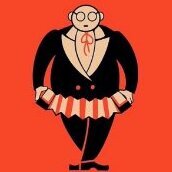-
Posts
2,647 -
Joined
-
Last visited
About Geoff Wooff
- Currently Viewing Forums Index
- Birthday 04/24/1950
Profile Information
-
Gender
Male
-
Interests
playing music on English concertina, uilleann pipes and hurdy gurdy (among others). Making instruments, keeping healthy in my old age, chatting with friends. Now learning to play MacCann Duet.Latest project is Learning the Hayden Duet.
-
Location
France
Recent Profile Visitors
Geoff Wooff's Achievements

Ineluctable Opinionmaker (6/6)
-
Hello Dirge, are you still playing 31527 ? Geoff.
-
Sold! Hammer price €20,000 !! Plus the buyer's premium and sales tax........
-
I have two numb fingers caused by Carpal Tunnel Syndrome and that is two years after an operation to relieve the problem. Prior to the surgery I had three fingers and thumb numb and a great loss of strength in my left hand. This appears to be in the repetitive strain injury category and that does not surprise me as my hands have come in for a lot of strain during a long working life. I can manage to play my concertinas again, though occasionally I hit a wrong note, some would say it was ever thus. There are various nerve and circulation problems that affect the fingers, I wish you good luck in finding a cure.
-
Thanks for adding the links Alex...... I'm a bit of a dunce when it comes to this IT stuff.
-
Claude the Clown is an automaton playing the concertina by Gustave Vichy, circa 1890. This very interesting item is coming up for auction in Cologne on the 23rd March... with an estimate of €18,000 - €25,000 ! Well worth a look at the information and photos provided at www.the-saleroom.com ( a search for 'concertina' will bring up the details) .
-

Question for Baritone English players....
Geoff Wooff replied to Matthew Heumann's topic in General Concertina Discussion
A few years ago I tried a Morse Baritone and found it wanting in its air supply in comparison to my 8 inch octagonal Wheastsone with seven fold bellows. Perhaps it is mostly a case of 'what one is used to' and for a single note melody player the Morse would have been fine. Even when playing the Baritone-Treble with chordal accompaniment, for the most part, I still have more air than I need . On second thoughts, after a test with a couple of larger arrangements, there is sufficient wind but a big chord can use a significant amount of the seven fold length. -
Some people make a lighter bellows for the English, Wim Wakker for one. I have a set of Wakker bellows on my Treble EC and I enjoy the way they work. A couple of times I have tried the bellows kits from Sandylaneman which are probably meant for Anglos.... well made and price is good but somewhat heavier in action. A search at www. wakker-concertinas.com will find a description of the difference between Anglo and English / Duet bellows.
-
I sympathize with you Bob and hope you can get some professional help with this problem. Two years after an operation to relieve Carpal Tunnel Syndrome I still have numb middle and third fingers on my left hand . Although things have improved I doubt the sense of touch will ever recover fully. At least I can work fairly well again but will have to put up with the odd mistake on the concertina...... nothing new there then !
-
I have come across Jones Broad Steel reeds on several of his anglos. They produced a very nice tone but were somewhat slower to respond, sure it was not much but it felt like the player would need to hussle along, use a little more air pressure.
-

How many concertinas have you owned/tried?
Geoff Wooff replied to LR71's topic in General Concertina Discussion
Oh I can assure you there is plenty of fussing about when trying someone else's EC... same problem , the straps. There are two types of players; the one's who have their straps set for gripping the end joint of the thumb and the others ,like myself, who have the straps slack enough to shove the thumbs in as far as they will go. As for how many concertinas have I Tried ; more than a hundred, Owned; lost count but likely more than fifty... currently have three. -
That is sad news Peter. Crotty's was THE go to bar in Kilrush.
-

Sold elsewhere 1927 Wheatstone M22, reduced.. $2800
Geoff Wooff replied to seanc's topic in Buy & Sell
And worth every centime!! -
It could well be Steve.
-
Nice looking Baritone there Mike. What I am looking for is a loud Baritone that I can use in a band.... 'they' did make 'em ,probably for concertina bands. I'll see if I can post a photo of what I'm looking for.
-
Certainly an interesting instrument Stephen .





.thumb.jpg.23b6fcf34553f5a5db9b762a831724d9.jpg)
